- Home
- Robert Silverberg
Book of Skulls Page 9
Book of Skulls Read online
Page 9
Wasn’t looking for it. Hadn’t ever heard of it. Wangled permission to go into the storage vaults in quest of a collection of manuscripts of Catalan mystic verse, thirteenth-century, supposedly obtained from the Barcelonian dealer in antiquities, Jaime Maura Gudiol, in 1893. Professor Vasquez Ocaña, with whom I’m supposedly collaborating on a group of translations from the Catalan, had heard about the Maura hoard from his professor, thirty or forty years ago, and had some vague memories of having handled a few of the actual manuscripts. By checking faded accession cards in nineteenth-century sepia ink, I succeeded in learning where in the storage vaults the Maura collection was likely to be found, and went looking. Dark room; sealed boxes; an infinity of cardboard folders; no luck. Coughing, choking in the dust. My fingers blackened, my face grimy. We’ll try one more box and call it quits. And then: a stiff red paper binder containing a handsome illuminated manuscript on sheets of fine vellum. Richly embellished title: Liber Calvarium. The Book of Skulls. A fascinating title, sinister, romantic. I turned a page. Elegant uncial lettering in a clear, bold hand of the tenth or eleventh century, the words not in Latin but in a heavily Latinate Catalan, which I automatically translated. Hear this, O Nobly-Born: life eternal we offer thee. The damnedest incipit I had ever encountered. Had I made a mistake? No. Life eternal we offer thee. The page held a paragraph of text, the rest of it not so easy to decipher as the incipit; along the bottom of the page and up the left side were eight beautifully painted human skulls, each set off from the next by a border of columns and a little Romanesque vault. Only one skull still had its lower jaw. One was tipped on its side. But all were grinning, and there was mischief in their shadowy eyesockets: face after face saying, from beyond the grave, It would do you some good to learn the things we have come to know.
I sat down on a box of old parchments and leafed quickly through the manuscript. Twelve sheets or so, all embellished with grotesqueries of the grave—crossed thighbones, toppled tombstones, a disembodied pelvis or two, and skulls, skulls, skulls, skulls. Translating it on the spot was beyond me; much of the vocabulary was obscure, being neither Latin nor Catalan but some dreamy, flickering intermediate language. Yet the broad sense of what I had found quickly came clear. The text was addressed to some prince by the abbot of a monastery under his protection and was, essentially, an invitation to the prince to withdraw from the mundane world in order to partake of the “mysteries” of the monastic order. The disciplines of the monks, the abbot said, were aimed toward the defeat of Death, by which he meant not the triumph of the spirit in the next world but rather the triumph of the body in this one. Life eternal we offer thee. Contemplation, spiritual and physical exercises, proper diet, and so forth—these were the gateways to everlasting life.
An hour of sweaty toil gave me these passages:
“The First Mystery is this: that the skull lieth beneath the face, as death lieth alongside life. But, O Nobly-Born, there is no paradox in this, for death is the companion of life, life is the messenger of death. If one could but reach through the face to the underlying skull and befriend it, one might [unintelligible]. . .
“The Sixth Mystery is this: that our gift shall always be despised, that we shall ever be fugitives among men, so that we flee from place to place, from the caves of the north to the caves of the south, from the [uncertain] of the fields to the [uncertain] of the city, and so has it been in the hundreds of years of my life and the hundreds of years of my forebears. . . .
“The Ninth Mystery is this: that the price of a life must always be a life. Know, O Nobly-Born, that eternities must be balanced by extinctions, and therefore we ask of thee that the ordained balance be gladly sustained. Two of thee we undertake to admit to our fold. Two must go into darkness. As by living we daily die, so then by dying we shall forever live. Is there one among thee who will relinquish eternity for his brothers of the four-sided figure, so that they may come to comprehend the meaning of self-denial? And is there one among thee whom his comrades are prepared to sacrifice, so that they may come to comprehend the meaning of exclusion? Let the victims choose themselves. Let them define the quality of their lives by the quality of their departures. . . .”
There was more, eighteen Mysteries in all, plus a peroration in absolutely opaque verse. I was captured. It was the intrinsic fascination of the text that caught me, its somber beauty, its ominous embellishments, its gonglike rhythms, rather than any immediate connection with that Arizona monastery. Taking the manuscript from the library was impossible, of course, but I went upstairs, emerging from the vaults like Banquo’s grimy ghost, and arranged for the use of a study cubicle deep in the recesses of the stacks. Then I went home and bathed, saying nothing to Ned about my discovery, though he saw I was preoccupied with something. And returned to the library armed with notepaper, pencils, my own dictionaries. The manuscript was already on my assigned desk. Until ten that evening, until closing time, I wrestled with it in my badly lit cloister. Yes, no doubt of it: these Spaniards were claiming a technique for attaining immortality. The manuscript gave no actual clues to their processes, but merely insisted that they were successful. There was much symbology of the-skull-beneath-the-face; for a life-oriented cult, they were greatly attracted to the imagery of the grave. Perhaps that was the necessary discontinuity, the sense of jarring juxtapositions, that Ned makes so much of in his esthe-tic theories. The text made it plain that some of these skull-worshipping monks, if not all, had survived for centuries. (Even for thousands of years? An ambiguous passage in the Sixteenth Mystery implied a lineage older than the pharaohs.) Their longevity evidently earned them the resentment of the mortals around them, the peasants and shepherds and barons; many times had they moved their headquarters, seeking always a place where they could practice their exercises in peace.
Three days of hard work gave me a reliable translation of perhaps 85 percent of the text and a working understanding of the rest. I did it mostly by myself, though I consulted Professor Vasquez Ocaña about some of the more troublesome phrases, concealing from him, however, the nature of my project. (When he asked if I had found the Maura Gudiol cache I replied vaguely.) At this point I still thought of the whole thing as a charming fantasy. I had read Lost Horizon when I was a boy; I remembered Shangri-la, the secret monastery in the Himalayas, the monks practicing yoga and breathing pure air, that wonderful shocker of a line, “That you are still alive, Father Perrault.” One didn’t take such stuff seriously. I visualized myself publishing my translation in, say, Speculum, with appropriate commentary on the medieval belief in immortality, references to the Prester John mythos, to Sir John Mandeville, to the Alexander romances. The Brotherhood of the Skulls, the Keepers of the Skulls who are its high priests, the Trial which must be undergone by four simultaneous candidates, only two of whom are permitted to survive, the hint of ancient mysteries passed down across millennia—why, this might have been some tale told by Sheherazade, might it not? I went to the trouble of carefully checking Burton’s version of the Thousand Nights and a Night, all sixteen volumes, thinking that the Moors might have brought this tale of skulls to Catalonia in the eighth or ninth century. No. Whatever I had found, it was no free-floating fragment of the Arabian Nights. Perhaps part of the Charlemagne cycle, then? Or some unattributed Romanesque yarn? I prowled through bulky indices of medieval mythological motifs. Nothing. I went further back. I became an expert on the whole literature of immortality and longevity, all in a single week. Tithonus, Methuselah, Gilgamesh, the Uttarakurus and the Jambu tree, the fisherman Glaukus, the Taoist immortals, yes, the whole bibliography. And then, the burst of insight, the pounding of the forehead, the wild shout that brought student couriers running from all corners of the stacks. Arizona! Monks who came from Mexico and before that went to Mexico from Spain! The frieze of skulls! I hunted for that article in the Sunday supplement again. Read it in a kind of delirium. Yes. “Skulls are everywhere, grinning, somber, in high relief or in three-dimensional representation. . . . The monks are lean, i
ntense men. . . . The one I spoke to . . . might have been thirty years old or three hundred, it was impossible to tell.” That you are still alive, Father Perrault. My astounded soul recoiled. Could I believe such things? I, skeptic, scoffer, materialist, pragmatist? Immortality? An age-old cult? Could such a thing be? The Keepers of the Skulls thriving among the cactus? The whole thing no myth of the medievals, no legend, but an actual continuing establishment that has penetrated even our automated world, one which I could visit whenever I chose to make the trip? Offering myself as candidate. Undergoing the Trial. Eli Steinfeld living to see the dawn of the thirty-sixth century. It was beyond all plausibility. I rejected the juxtaposition of manuscript and newspaper article as a wild coincidence; then, meditating, I succeeded in rejecting my rejection; and then I moved beyond that toward acceptance. It was necessary for me to make a formal act of faith, the first I had ever achieved, in order to begin to accept it. I compelled myself to agree that there could be powers outside the comprehension of contemporary science. I forced myself to shed a lifelong habit of dismissing the unknown until it has been made known by rigorous proofs. I allied myself willingly and gladly with the flying saucerites, with the Atlanteans, with the scientologists, with the flat-earthers, with the Forteans, with the macrobioticists, with the astrologers, with that whole legion of the credulous in whose company I had rarely felt comfortable before. At last I believed. I believed fully, though allowing for the possibility of error. I believed. Then I told Ned, and, after a while, Oliver and Timothy. Dangling the bait before them. Life eternal we offer thee. And here we are in Phoenix. Palm trees, cactus, the camel outside the motel: here we are. Tomorrow to commence the final phase of our quest for the House of Skulls.
19. Oliver
Maybe I did make too much fuss over picking up that hitchhiker. I don’t know. The whole episode puzzles me. Usually my motives for anything are clear, right out on the surface, but not this time. I was really shouting and rampaging at Ned. Why? Eli chewed me out for it afterward, saying that I had no business interfering with Ned’s freely taken decision to offer help to another human being. Ned was driving; he was in charge. Even Timothy, who backed me up when it happened, told me later that he thought I’d overreacted to the situation. The only one who didn’t say anything in the evening was Ned; but I knew Ned was burning about it.
Why did I do it, I wonder? I couldn’t have been in that much of a hurry to get to the skullhouse. Even if the hitchhiker had taken us fifteen minutes out of our way, so what? Throw a fit over fifteen minutes, with all of eternity ahead? It wasn’t the waste of time that was bugging me. It wasn’t that garbage about Charles Manson, either. It was something deeper, that I know.
I had this flash of intuition just as Ned was slowing down to offer the hippie a ride. The hippie is a fag, I thought. In just those words. The hippie is a fag. Ned has spotted him, I told myself; using the ESP that his kind seems to have, Ned has spotted him right on the highway, and Ned’s going to pick him up and bring him to the motel tonight. I have to be honest with myself. That was what I thought. Accompanied by an image of Ned and the hitchhiker in bed together, kissing, gasping, rolling around, fingering each other, doing whatever it is that homos like to do. I didn’t have any reason for suspecting stuff like that. The hippie was just a hippie, like five million others: barefoot, long messy hair, furry vest, tie-dyed jeans. Why did I think he was a fag? And even if he was a fag, so what? Didn’t Timothy and I pick up girls in New York and Chicago? Why shouldn’t Ned get some action of the kind he prefers? What do I have against homosexuals? One of my own roommates is one, isn’t he? One of my closest friends? I knew what Ned was when he moved in with us. I didn’t care, so long as he didn’t make passes at me. I liked Ned for himself, I didn’t give a shit about his sexual preferences. So why this sudden bigotry on the highway? Think about it some, Oliver. Think.
Maybe you were jealous. Eh? What about that possibility, Oliver? Maybe you didn’t want Ned carrying on with somebody else? Would you care to examine that notion a little while?
All right. I know he’s interested in me. He always has been. That puppydog look in his eyes when he looks at me, that dreamy wistfulness—I know what that means. Not that Ned’s ever approached me. He’s afraid to, afraid to explode a pretty useful friendship by stepping across the line. But even so, the desire’s there. Was I a dog in the manger, then, not giving Ned what he wants from me but not letting him get it from that hippie, either? What a tangled mess this is. But I have to sort everything out. My anger when Ned slowed the car. The shouting. The hysteria. Obviously something was being triggered in me. I’ve got to think some more about this. I’ve got to get it together. This frightens me. I’m likely to find out something about myself that I don’t want to know.
20. Ned
And now we’ve become detectives. Scouting all over Phoenix, trying to trace the skullhouse. I find it amusing: to come this far and not to be able to make the final connection. But all Eli has to go by is his newspaper clipping, which places the monastery “not far north of Phoenix.” That’s a big place, though, “not far north of Phoenix.” It covers everything between here and the Grand Canyon, say, from one side of the state to the other. We need help. After breakfast this morning Timothy took Eli’s clipping to the desk clerk, Eli feeling too shy or too eastern-looking to want to do the asking himself. The desk clerk didn’t know anything about any monastery anywhere, though, and suggested we inquire at the newspaper office, just across the street. But the newspaper, being an afternoon journal, didn’t open shop till nine, and we, still living on eastern standard time, had awakened very early this morning. It was even now only a quarter past eight. So we wandered around town to kill the forty-five minutes, peering at barber shops, at newsstands, at the windows of stores selling Indian pottery and cowboy accessories. The sun was already bright and the thermo-meter on a bank building announced that the temperature was seventy-nine degrees. It promised to be a stifling day. The sky was that fierce desert blue; the mountains just beyond the edge of town were pale brown. The city was silent, scarcely a car in the streets. Unrush hour in downtown Phoenix.
We hardly said a thing to one another. Oliver seemed still to be sulking over the ruckus he had started about that hitchhiker: he apparently felt embarrassed, and with good reason. Timothy acted bored and superior. He had expected Phoenix to be much livelier, the dynamic center of the dynamic Arizona economy, and the quiet here offended him. (Later we discovered that things are dynamic enough a mile or two north of downtown, where the real growth is taking place.) Eli was tense and withdrawn, no doubt wondering whether he had led us across the continent for nothing. And I? Edgy. Dry lips, dry throat. A tightness of the scrotum that comes over me only when I’m very, very, very nervous. Flexing and unflexing my gluteal muscles. What if the skullhouse doesn’t exist? Worse, what if it does? An end, then, to my elaborate oscillating dance; I would have to take sides at last, commit myself to the reality of the thing, give myself up wholly to the rites of the Keepers, or else, jeering, depart. What would I do? Always the threat of the Ninth Mystery lurked in the wings, shadowy, menacing, tempting. Eternities must be balanced by extinctions. Two live forever, two die at once. That proposition holds tender, quavering music for me; it shimmers afar; it sings seductively out of the naked hills. I fear it and yet I cannot resist the gamble it offers.
At nine we presented ourselves at the newspaper office. Again Timothy did the talking; his easy, self-assured, upper-class manners carry him smoothly through any kind of situation. The advantages of breeding. He identified us as college students doing research for a thesis on contemporary monasicism, which swept us past a receptionist and a reporter to one of the feature editors, who looked at our clipping and said that he knew nothing about any such monastery in the desert (dejection!) but that there was a man on his staff who specialized in keeping track of all the communes, cult headquarters, and similar settlements on the fringes of the town (hope!). Where was this man now? Oh, he’s on
vacation, said the editor (despair!). When will he be back in town? Didn’t leave town, matter of fact (hope reborn!). Spending his holiday at home. He might be willing to talk. At our request, the editor phoned and got us invited out to the house of this specialist in crackpottery. “He lives up past Bethany Home Road, just off Central, the sixty-four hundred block. You know where that is? You just go up Central, past Camelback, past Bethany Home—”
A ten-minute drive. We left sleepy downtown behind, plunging northward through the busy uptown section, all glass skyscrapers and sprawling shopping centers, and passed through that into a district of impressive-looking modern homes half concealed by thick gardens of tropical vegetation. Beyond that a short way, into a more modest residential zone, and we came to the house of the man who had the answers. His name was Gilson. Forty, deep tan, open blue eyes, high shiny forehead. A pleasant sort. Keeping track of the lunatic fringe was plainly a hobby, not an obsession, with him; this wasn’t the sort of man who had obsessions. Yes, he knew about the Brotherhood of the Skulls, though he didn’t call it that. “The Mexican Fathers” was the term he used. Hadn’t been there himself, no, though he had talked to someone who had, visitor from Massachusetts, maybe even the same one who wrote the newspaper article. Timothy asked if Gilson could tell us where the monastery was. Gilson invited us inside: small house, clean, typical southwestern decor—Navaho rugs on the wall, half a dozen Hopi pots in cream and orange occupying the bookshelves. He produced a map of Phoenix and environs. “Here you are, now,” he said, tapping the map. “To get out of town you go over here, Black Canyon Highway, that’s a freeway, you pick it up here and ride north. Follow the signs to Prescott, though of course you don’t want to go anywhere near that far. Now, here, you see, not much past city limits, a mile, two miles, you get off the freeway—you got a map? Here, let me mark it. And you follow this road here—then you turn onto this one, see, going northeast—I guess you drive six, seven miles—” He sketched a series of zigzags on our roadmap and finally a big X. “No,” he said, “that isn’t where the monastery is. That’s where you leave your car and walk. The road becomes just a trail, there, no car could possibly get through, not even a jeep, but young fellers like you, you won’t have any problems, it’s just three, four miles straight east.” “What if we miss it?” Timothy asked. “The monastery, not the road.” “You won’t,” Gilson told us. “But if you come to the Fort McDowell Indian Reservation, you’ll know you’ve gone a little too far. And when you see Roosevelt Lake, you’ll know you’ve gone a whole lot too far.”

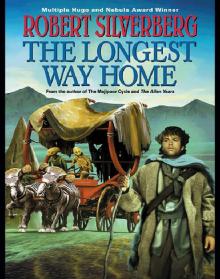 The Longest Way Home
The Longest Way Home Hawksbill Station
Hawksbill Station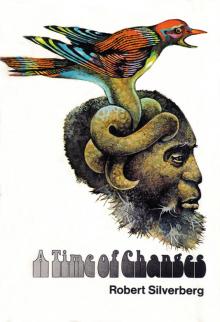 A Time of Changes
A Time of Changes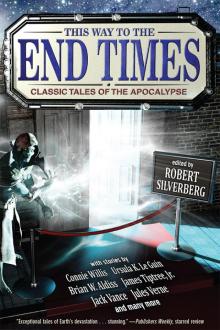 This Way to the End Times: Classic Tales of the Apocalypse
This Way to the End Times: Classic Tales of the Apocalypse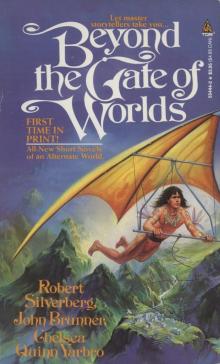 Beyond the Gate of Worlds
Beyond the Gate of Worlds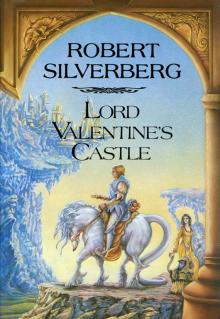 Lord Valentine's Castle
Lord Valentine's Castle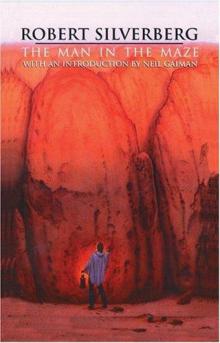 The Man in the Maze
The Man in the Maze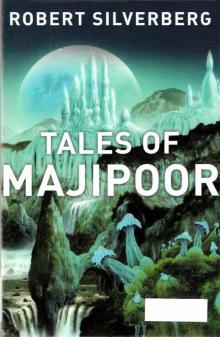 Tales of Majipoor
Tales of Majipoor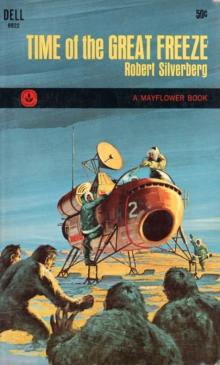 Time of the Great Freeze
Time of the Great Freeze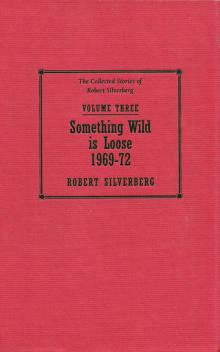 The Collected Stories of Robert Silverberg, Volume 3: Something Wild Is Loose: 1969-72
The Collected Stories of Robert Silverberg, Volume 3: Something Wild Is Loose: 1969-72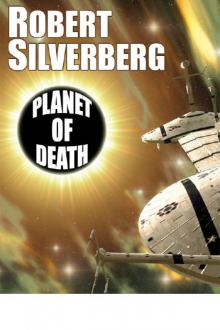 Planet of Death
Planet of Death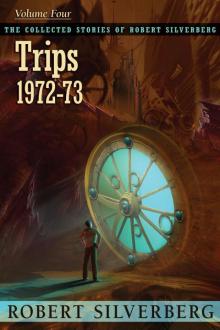 Trips: The Collected Stories of Robert Silverberg, Volume Four
Trips: The Collected Stories of Robert Silverberg, Volume Four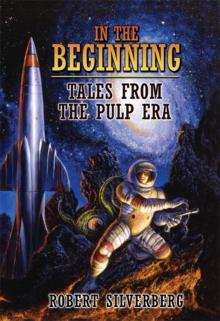 In the Beginning: Tales From the Pulp Era
In the Beginning: Tales From the Pulp Era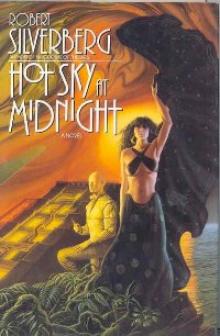 Hot Sky at Midnight
Hot Sky at Midnight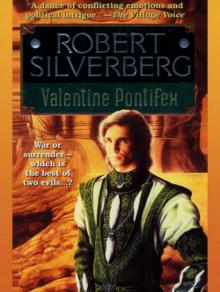 Valentine Pontifex
Valentine Pontifex Up the Line
Up the Line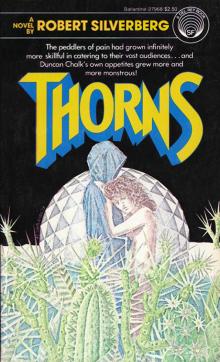 Thorns
Thorns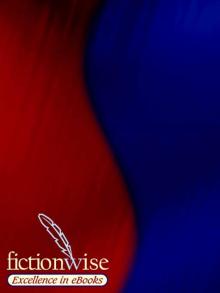 Amanda and the Alien
Amanda and the Alien Star of Gypsies
Star of Gypsies Nightwings
Nightwings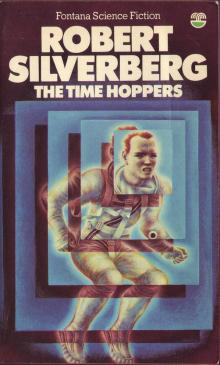 The Time Hoppers
The Time Hoppers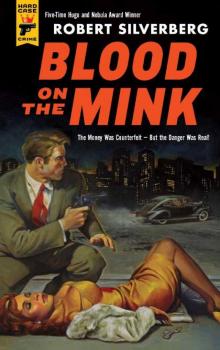 Blood on the Mink
Blood on the Mink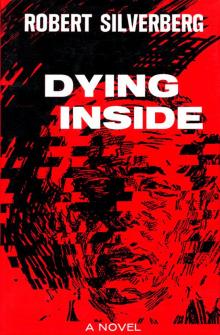 Dying Inside
Dying Inside The Last Song of Orpheus
The Last Song of Orpheus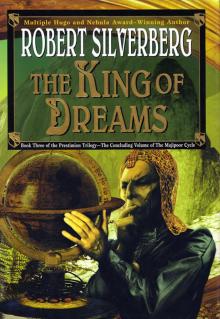 The King of Dreams
The King of Dreams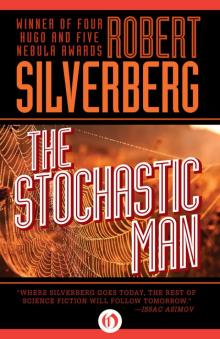 The Stochastic Man
The Stochastic Man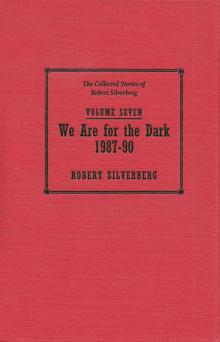 The Collected Stories of Robert Silverberg, Volume Seven: We Are for the Dark
The Collected Stories of Robert Silverberg, Volume Seven: We Are for the Dark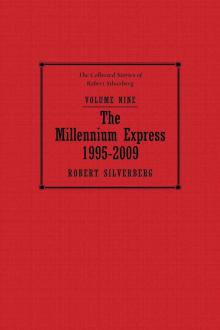 The Millennium Express: The Collected Stories of Robert Silverberg, Volume Nine
The Millennium Express: The Collected Stories of Robert Silverberg, Volume Nine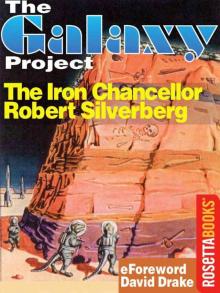 The Iron Chancellor
The Iron Chancellor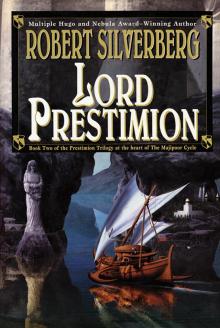 Lord Prestimion
Lord Prestimion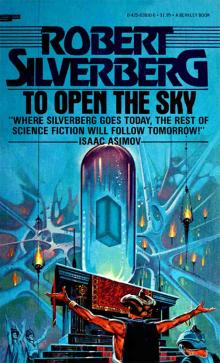 To Open the Sky
To Open the Sky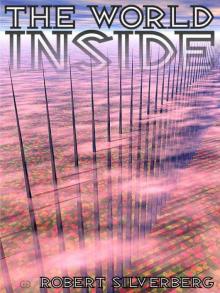 The World Inside
The World Inside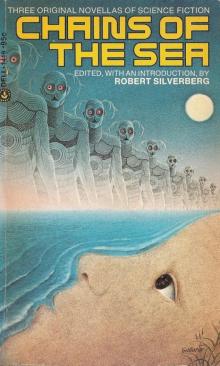 Chains of the Sea
Chains of the Sea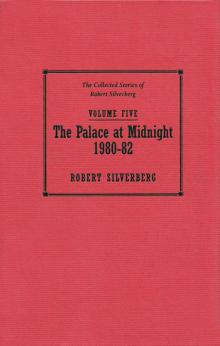 The Collected Stories of Robert Silverberg, Volume Five: The Palace at Midnight
The Collected Stories of Robert Silverberg, Volume Five: The Palace at Midnight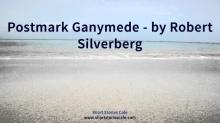 Postmark Ganymede
Postmark Ganymede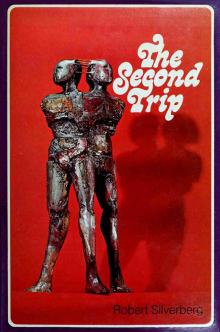 The Second Trip
The Second Trip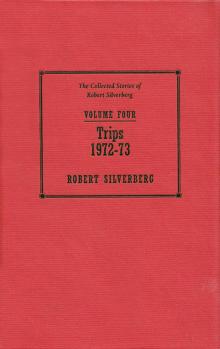 The Collected Stories of Robert Silverberg, Volume 4: Trips: 1972-73
The Collected Stories of Robert Silverberg, Volume 4: Trips: 1972-73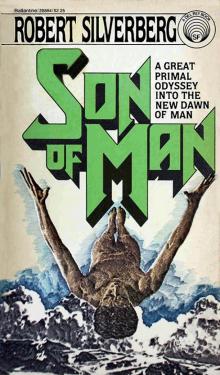 Son of Man
Son of Man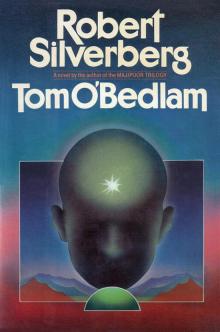 Tom O'Bedlam
Tom O'Bedlam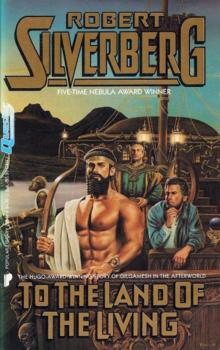 To the Land of the Living
To the Land of the Living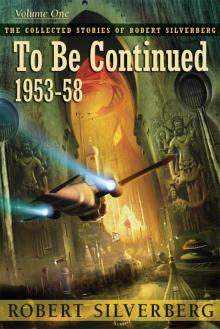 To Be Continued: The Collected Stories of Robert Silverberg, Volume One
To Be Continued: The Collected Stories of Robert Silverberg, Volume One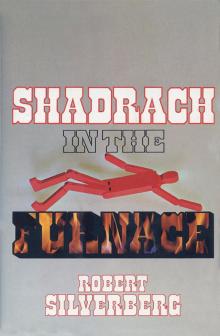 Shadrach in the Furnace
Shadrach in the Furnace The Chalice of Death: Three Novels of Mystery in Space
The Chalice of Death: Three Novels of Mystery in Space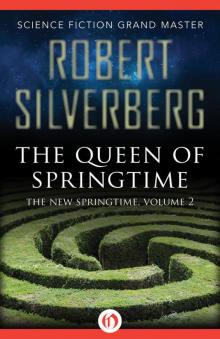 The Queen of Springtime
The Queen of Springtime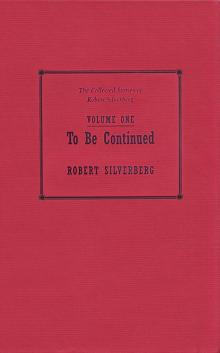 To Be Continued 1953-1958
To Be Continued 1953-1958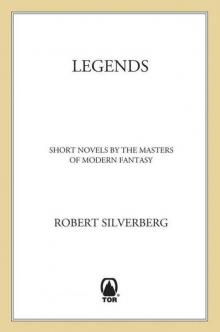 Legends
Legends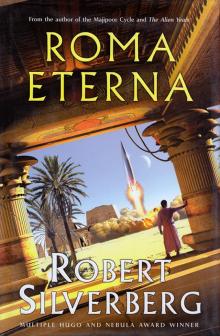 Roma Eterna
Roma Eterna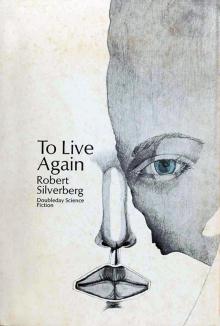 To Live Again
To Live Again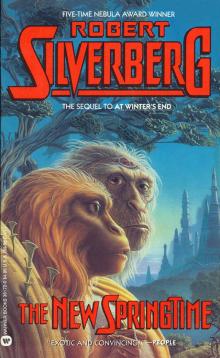 At Winter's End
At Winter's End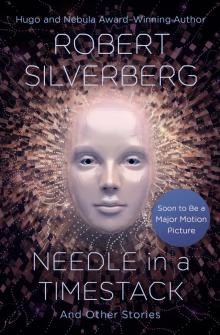 Needle in a Timestack
Needle in a Timestack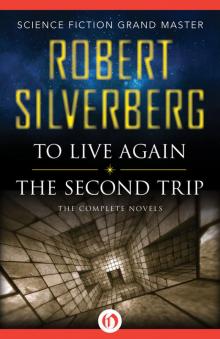 To Live Again and the Second Trip: The Complete Novels
To Live Again and the Second Trip: The Complete Novels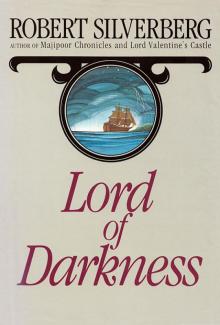 Lord of Darkness
Lord of Darkness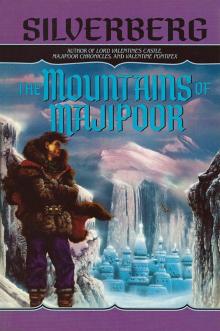 The Mountains of Majipoor
The Mountains of Majipoor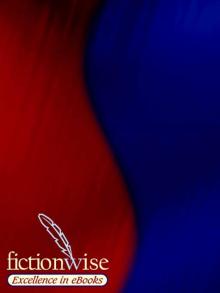 The World Outside
The World Outside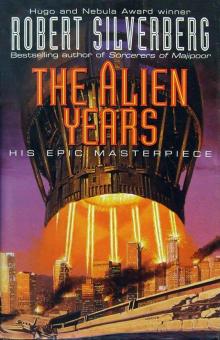 The Alien Years
The Alien Years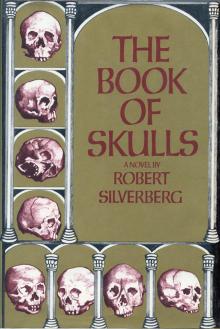 The Book of Skulls
The Book of Skulls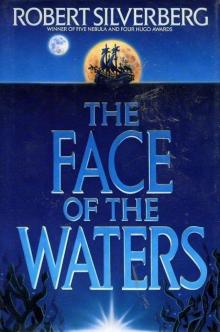 The Face of the Waters
The Face of the Waters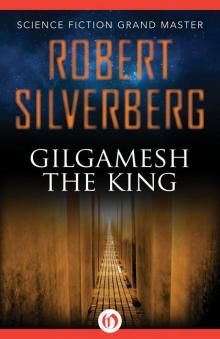 Gilgamesh the King
Gilgamesh the King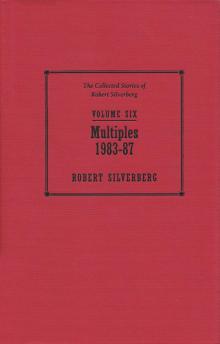 The Collected Stories of Robert Silverberg, Volume 6: Multiples: 1983-87
The Collected Stories of Robert Silverberg, Volume 6: Multiples: 1983-87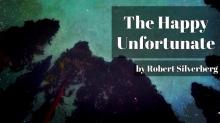 The Happy Unfortunate
The Happy Unfortunate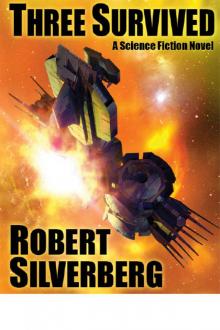 Three Survived
Three Survived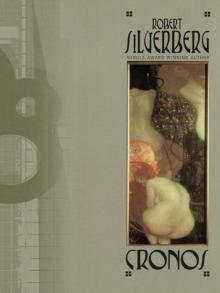 Cronos
Cronos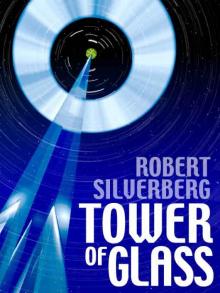 Tower of Glass
Tower of Glass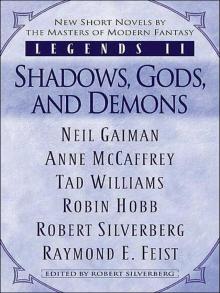 Legends II
Legends II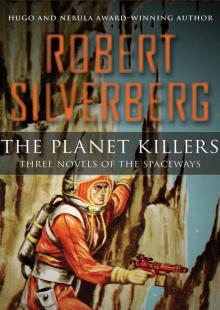 The Planet Killers
The Planet Killers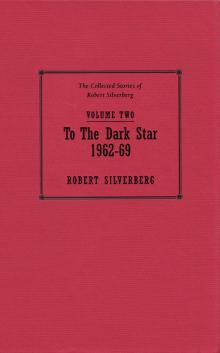 The Collected Stories of Robert Silverberg, Volume 2: To the Dark Star: 1962-69
The Collected Stories of Robert Silverberg, Volume 2: To the Dark Star: 1962-69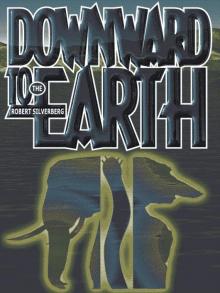 Downward to the Earth
Downward to the Earth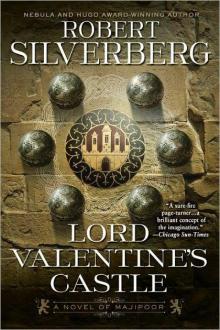 Lord Valentine's Castle: Book One of the Majipoor Cycle
Lord Valentine's Castle: Book One of the Majipoor Cycle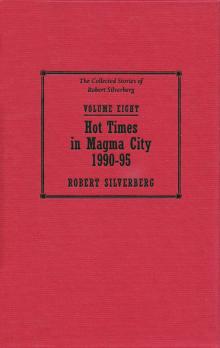 Hot Times in Magma City, 1990-95
Hot Times in Magma City, 1990-95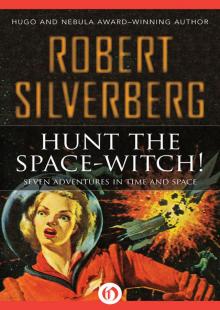 Hunt the Space-Witch! Seven Adventures in Time and Space
Hunt the Space-Witch! Seven Adventures in Time and Space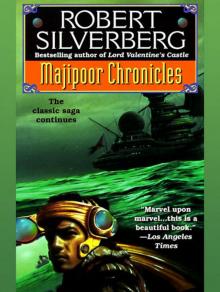 Majipoor Chronicles
Majipoor Chronicles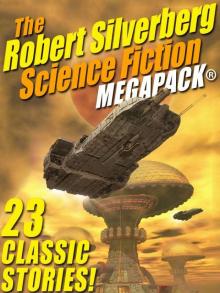 The Robert Silverberg Science Fiction Megapack(r)
The Robert Silverberg Science Fiction Megapack(r)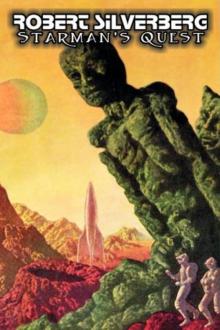 Starman's Quest
Starman's Quest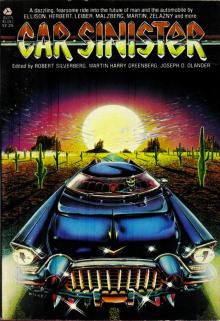 Car Sinister
Car Sinister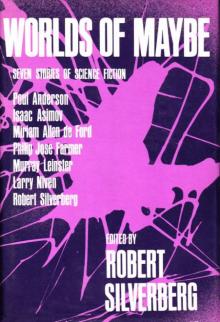 Worlds of Maybe
Worlds of Maybe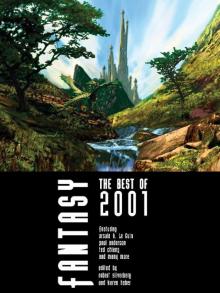 Fantasy The Best of 2001
Fantasy The Best of 2001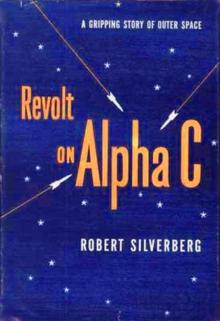 Revolt on Alpha C
Revolt on Alpha C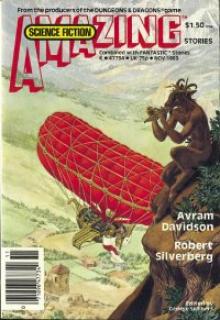 Homefaring
Homefaring The Pardoner's Tale
The Pardoner's Tale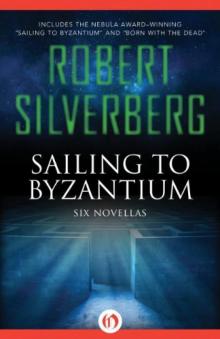 Sailing to Byzantium - Six Novellas
Sailing to Byzantium - Six Novellas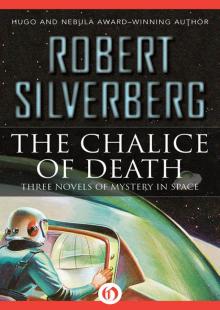 The Chalice of Death
The Chalice of Death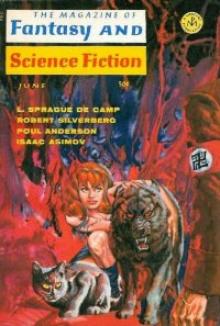 Sundance
Sundance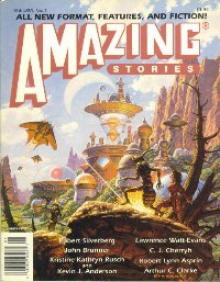 A Tip on a Turtle
A Tip on a Turtle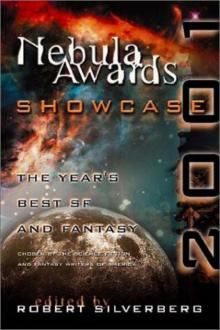 Nebula Awards Showcase 2001: The Year's Best SF and Fantasy Chosen by the Science Fiction and Fantasy Writers of America
Nebula Awards Showcase 2001: The Year's Best SF and Fantasy Chosen by the Science Fiction and Fantasy Writers of America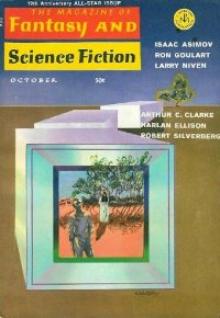 The Fangs of the Trees
The Fangs of the Trees The Palace at Midnight: The Collected Work of Robert Silverberg, Volume Five
The Palace at Midnight: The Collected Work of Robert Silverberg, Volume Five The Millennium Express - 1995-2009 - The Collected Stories of Robert Silverberg Volume Nine
The Millennium Express - 1995-2009 - The Collected Stories of Robert Silverberg Volume Nine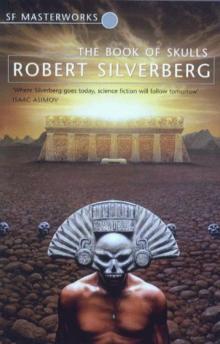 Book of Skulls
Book of Skulls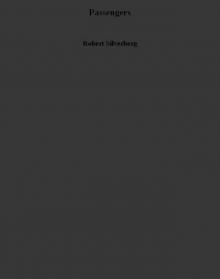 Passengers
Passengers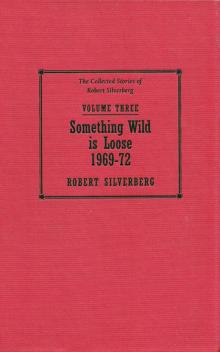 Something Wild is Loose - 1969–72 - The Collected Stories of Robert Silverberg Volume Three
Something Wild is Loose - 1969–72 - The Collected Stories of Robert Silverberg Volume Three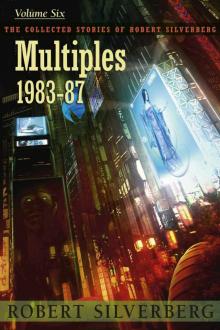 Multiples
Multiples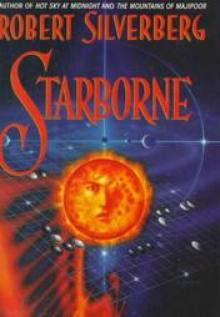 Starborne
Starborne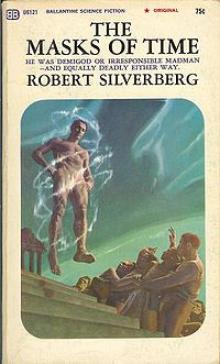 The Masks of Time
The Masks of Time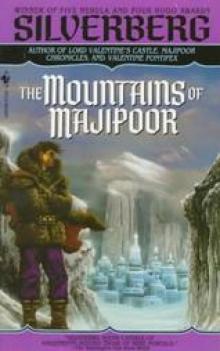 The Mountains of Majipoor m-8
The Mountains of Majipoor m-8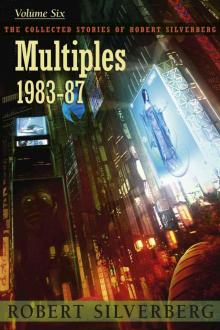 Multiples (1983-87)
Multiples (1983-87)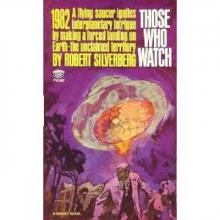 Those Who Watch
Those Who Watch In the Beginning
In the Beginning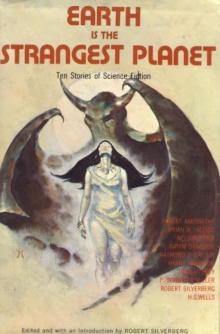 Earth Is The Strangest Planet
Earth Is The Strangest Planet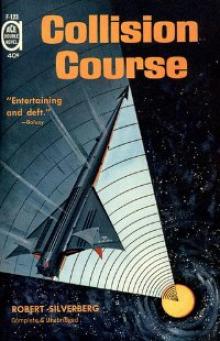 Collision Course
Collision Course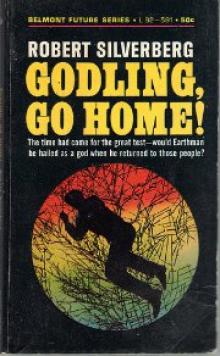 Neutral Planet
Neutral Planet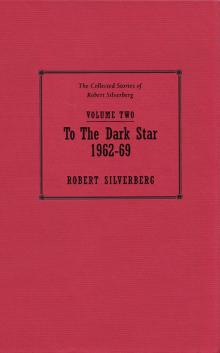 To the Dark Star - 1962–69 - The Collected Stories of Robert Silverberg Volume Two
To the Dark Star - 1962–69 - The Collected Stories of Robert Silverberg Volume Two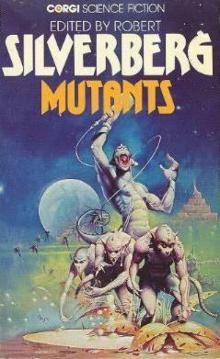 Mutants
Mutants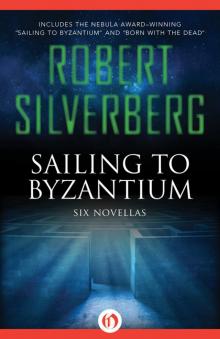 Sailing to Byzantium
Sailing to Byzantium When We Went to See the End of the World
When We Went to See the End of the World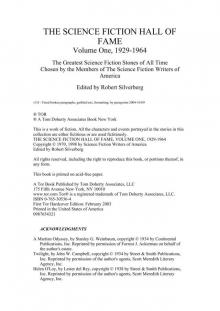 Robert Silverberg The Science Fiction Hall Of Fame Volume One, 1929-1964
Robert Silverberg The Science Fiction Hall Of Fame Volume One, 1929-1964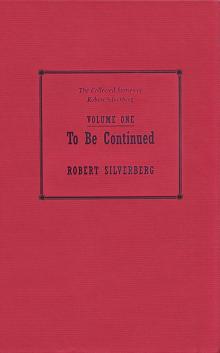 To Be Continued - 1953–58 - The Collected Stories of Robert Silverberg Volume One
To Be Continued - 1953–58 - The Collected Stories of Robert Silverberg Volume One Valentine Pontifex m-3
Valentine Pontifex m-3 Gianni
Gianni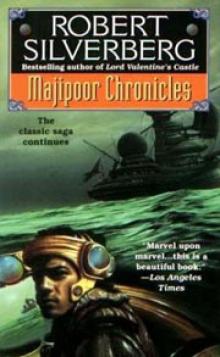 Majipoor Chronicles m-2
Majipoor Chronicles m-2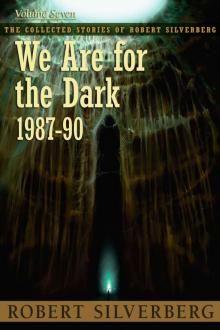 We Are for the Dark (1987-90)
We Are for the Dark (1987-90)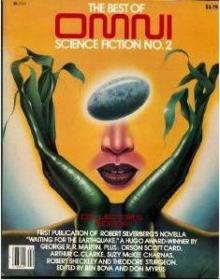 Waiting for the Earthquake
Waiting for the Earthquake Fantasy: The Best of 2001
Fantasy: The Best of 2001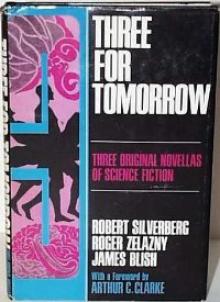 How It Was When the Past Went Away
How It Was When the Past Went Away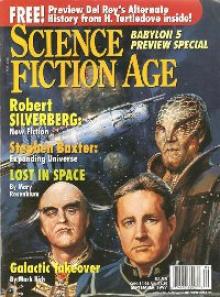 Beauty in the Night
Beauty in the Night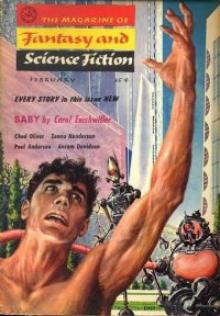 The Man Who Never Forgot
The Man Who Never Forgot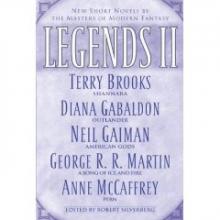 The Book of Changes m-9
The Book of Changes m-9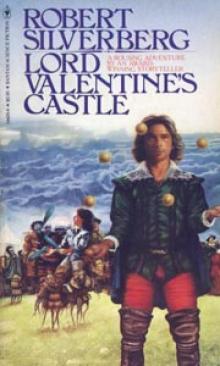 Lord Valentine's Castle m-1
Lord Valentine's Castle m-1 This Way to the End Times
This Way to the End Times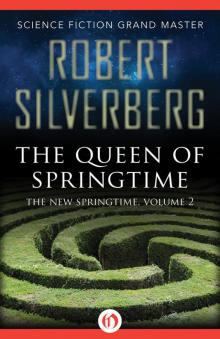 Queen of Springtime
Queen of Springtime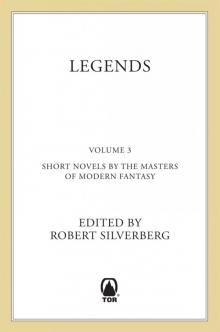 Legends-Volume 3 Stories by the Masters of Modern Fantasy
Legends-Volume 3 Stories by the Masters of Modern Fantasy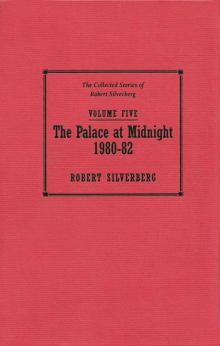 The Palace at Midnight - 1980–82 - The Collected Stories of Robert Silverberg Volume Five
The Palace at Midnight - 1980–82 - The Collected Stories of Robert Silverberg Volume Five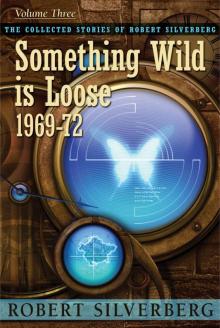 Something Wild is Loose: The Collected Stories of Robert Silverberg, Volume Three
Something Wild is Loose: The Collected Stories of Robert Silverberg, Volume Three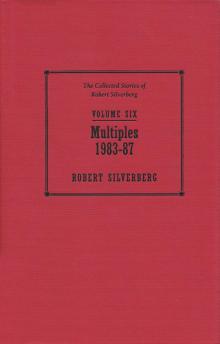 Multiples - 1983–87 - The Collected Stories of Robert Silverberg Volume Six
Multiples - 1983–87 - The Collected Stories of Robert Silverberg Volume Six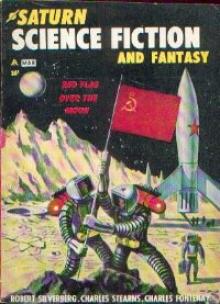 Alaree
Alaree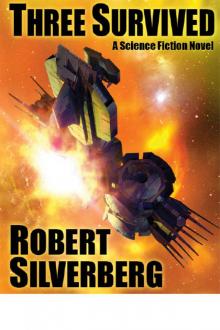 Three Survived: A Science Fiction Novel
Three Survived: A Science Fiction Novel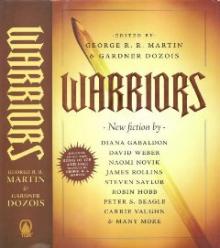 Defenders of the Frontier
Defenders of the Frontier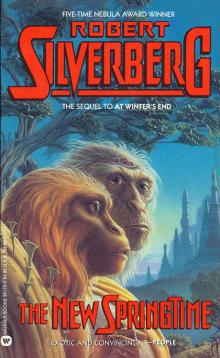 The New Springtime
The New Springtime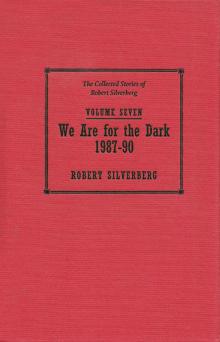 We Are for the Dark - 1987–90 - The Collected Stories of Robert Silverberg Volume Seven
We Are for the Dark - 1987–90 - The Collected Stories of Robert Silverberg Volume Seven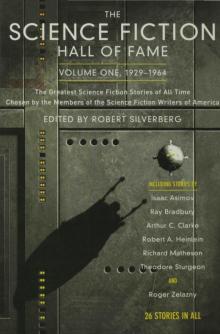 The Science Fiction Hall of Fame, Volume One 1929-1964--The Greatest Science Fiction Stories of All Time Chosen by the Members of the Science Fiction Writers of America
The Science Fiction Hall of Fame, Volume One 1929-1964--The Greatest Science Fiction Stories of All Time Chosen by the Members of the Science Fiction Writers of America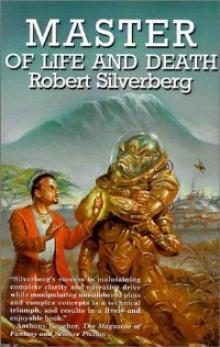 Master Of Life And Death
Master Of Life And Death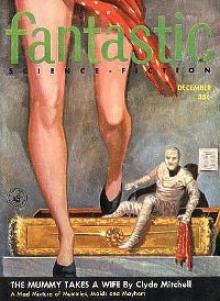 Choke Chain
Choke Chain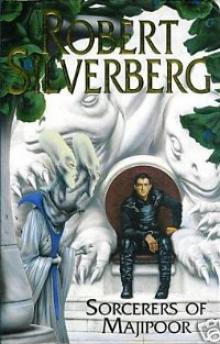 Sorcerers of Majipoor m-4
Sorcerers of Majipoor m-4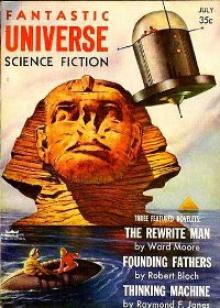 Absolutely Inflexible
Absolutely Inflexible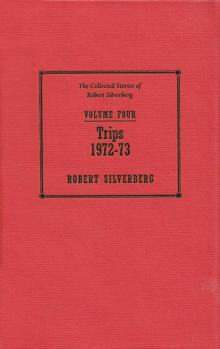 Trips - 1962–73 - The Collected Stories of Robert Silverberg Volume Four
Trips - 1962–73 - The Collected Stories of Robert Silverberg Volume Four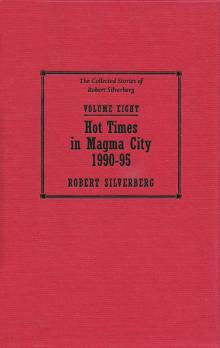 Hot Times in Magma City - 1990-95 - The Collected Stories of Robert Silverberg Volume Eight
Hot Times in Magma City - 1990-95 - The Collected Stories of Robert Silverberg Volume Eight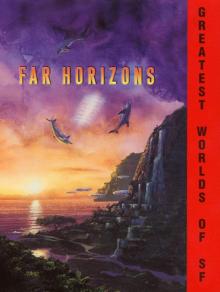 Far Horizons
Far Horizons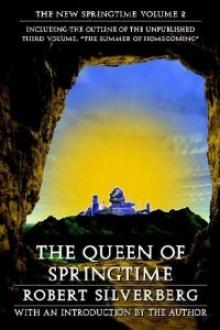 The Queen of Springtime ns-2
The Queen of Springtime ns-2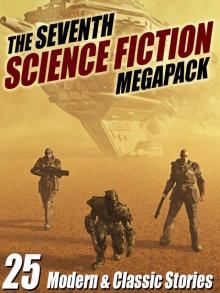 The Seventh Science Fiction Megapack
The Seventh Science Fiction Megapack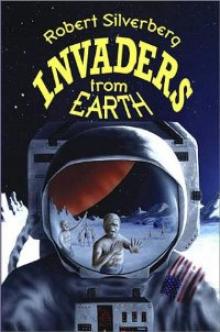 Invaders From Earth
Invaders From Earth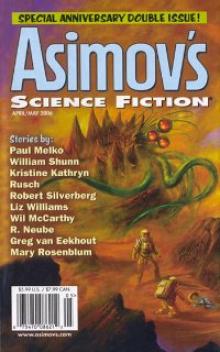 Hanosz Prime Goes To Old Earth
Hanosz Prime Goes To Old Earth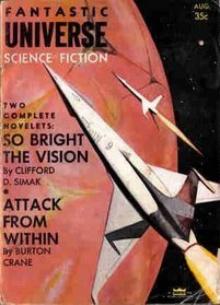 The Macauley Circuit
The Macauley Circuit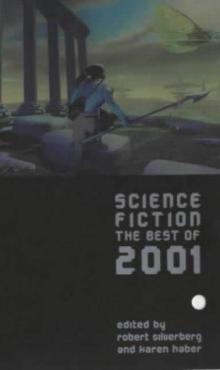 Science Fiction: The Best of 2001
Science Fiction: The Best of 2001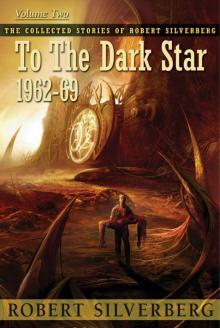 To the Dark Star: The Collected Stories of Robert Silverberg, Volume Two
To the Dark Star: The Collected Stories of Robert Silverberg, Volume Two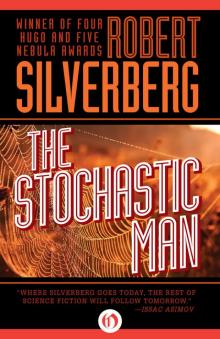 Stochastic Man
Stochastic Man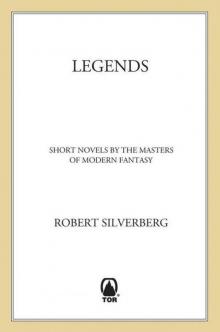 Legends: Stories By The Masters of Modern Fantasy
Legends: Stories By The Masters of Modern Fantasy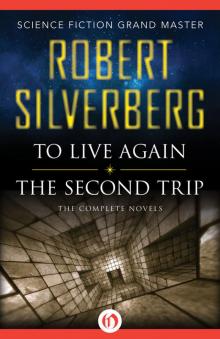 To Live Again And The Second Trip
To Live Again And The Second Trip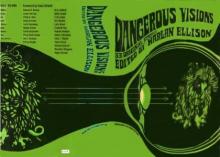 Flies
Flies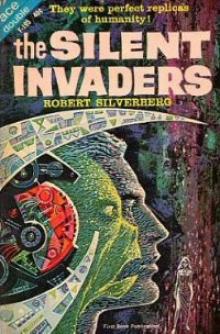 The Silent Invaders
The Silent Invaders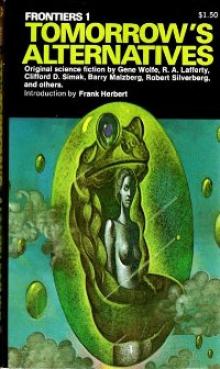 Ship-Sister, Star-Sister
Ship-Sister, Star-Sister